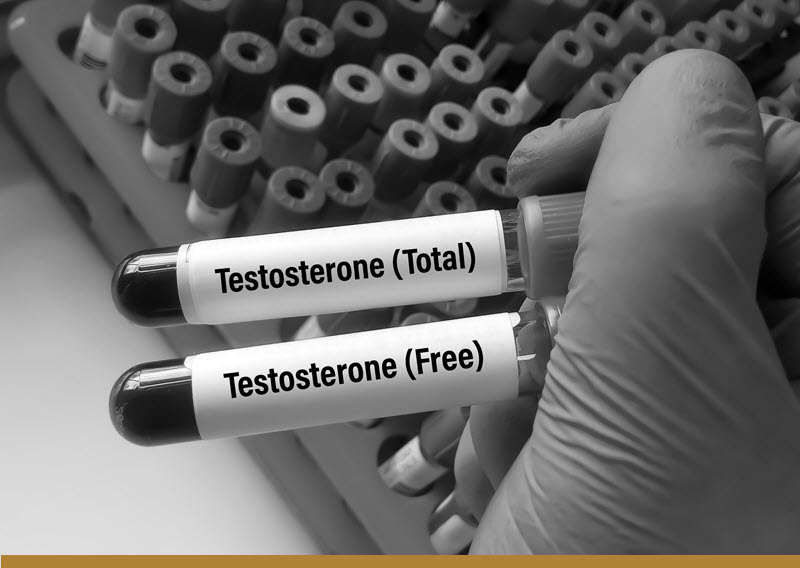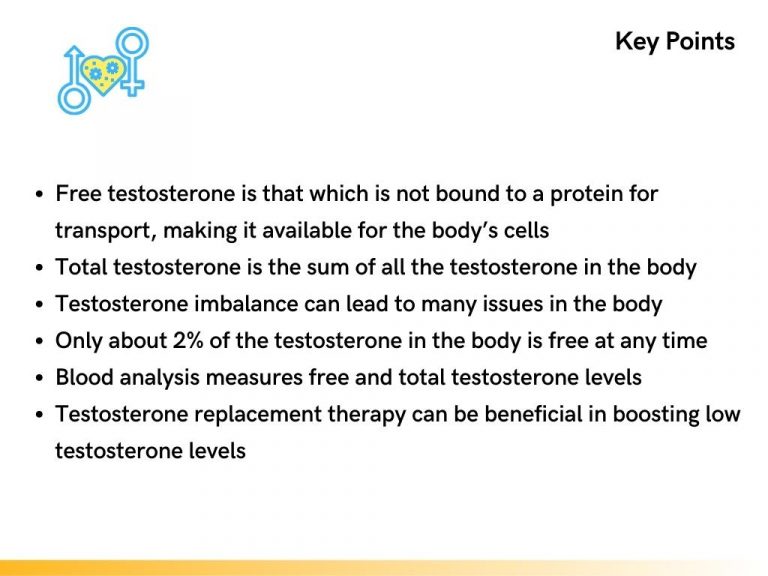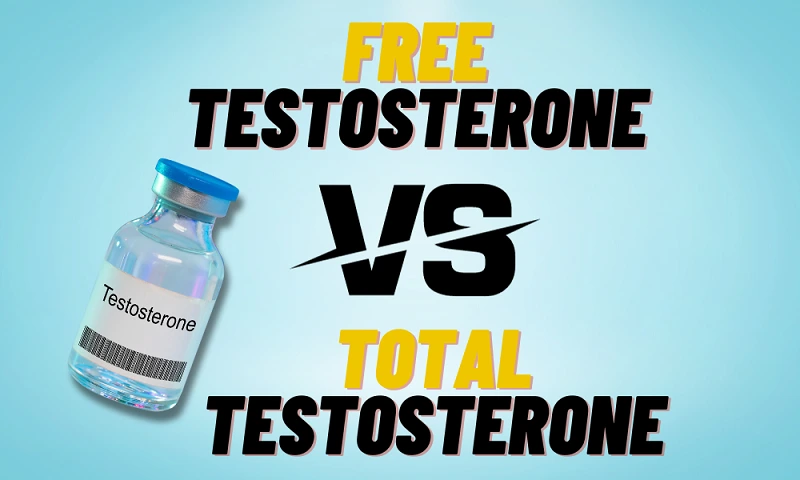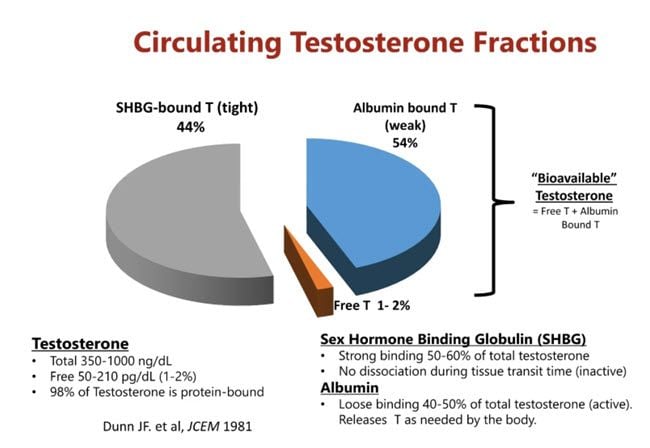What Is The Difference Between Free Testosterone And Total Testosterone

Testosterone, often hailed as the primary male sex hormone, is vital for a range of bodily functions, impacting everything from muscle mass and bone density to libido and mood. However, not all testosterone is created equal, or rather, not all of it is readily available for the body to use. This distinction lies at the heart of understanding the difference between free testosterone and total testosterone, a critical factor for both men and women assessing their hormonal health.
Understanding the nuances between free and total testosterone is crucial for accurate diagnosis and treatment of hormonal imbalances. While total testosterone represents the entire amount of testosterone in the blood, free testosterone is the portion that's unbound and biologically active, readily available to exert its effects on target tissues. Factors like age, sex hormone-binding globulin (SHBG) levels, and certain medical conditions can significantly influence the ratio of free to total testosterone. This article delves into the intricate relationship between these two measures, exploring their individual roles, the factors that affect them, and their clinical significance in assessing overall health and well-being.
Total Testosterone: The Big Picture
Total testosterone measures the entire quantity of testosterone present in the bloodstream. It encompasses both the testosterone that is bound to proteins and the testosterone that is circulating freely.
A standard blood test typically measures total testosterone, providing a general overview of testosterone production. This measurement is often the first step in evaluating potential hormonal imbalances.
Free Testosterone: The Active Player
Free testosterone is the fraction of testosterone that is not bound to proteins in the blood. This unbound testosterone is biologically active and able to interact with cells to exert its effects.
Only about 1-4% of total testosterone circulates freely, making it a relatively small but critically important component. This is the testosterone that readily binds to androgen receptors in tissues, influencing muscle growth, bone strength, and sexual function.
Factors affecting free testosterone levels are more complex, including SHBG, albumin and other protein levels.
The Role of Sex Hormone-Binding Globulin (SHBG)
SHBG is a protein produced by the liver that binds to sex hormones, including testosterone. When testosterone is bound to SHBG, it becomes unavailable to tissues.
High levels of SHBG can reduce the amount of free testosterone available to the body, even if total testosterone appears to be within the normal range. Conversely, low SHBG levels can lead to higher levels of free testosterone.
Conditions like hyperthyroidism, liver disease, and certain medications can affect SHBG production.
Albumin and Testosterone Binding
Besides SHBG, albumin, another protein in the blood, also binds to testosterone, albeit with a weaker affinity. This albumin-bound testosterone can more readily dissociate and become free testosterone than testosterone bound to SHBG.
The albumin-bound fraction acts as a reservoir, helping to buffer fluctuations in free testosterone levels. Understanding the interplay between SHBG and albumin binding is key to interpreting testosterone test results.
Why Measure Free Testosterone?
Measuring free testosterone provides a more accurate assessment of testosterone bioavailability than measuring total testosterone alone. This is particularly important when SHBG levels are abnormal.
In some cases, a person may have normal total testosterone but low free testosterone due to high SHBG. This can lead to symptoms of testosterone deficiency, even if total testosterone is within the reference range.
Symptoms of testosterone deficiency includes fatigue, reduced muscle mass, decreased libido, and erectile dysfunction.
Clinical Significance and Testing
Total testosterone is typically measured first as a screening test. If total testosterone is abnormal or if there are clinical signs of testosterone deficiency despite normal total testosterone, a free testosterone test or a calculated free testosterone index is often performed.
The free testosterone index is calculated using total testosterone and SHBG levels, providing an estimate of free testosterone. Direct measurement of free testosterone is also available, but it can be less reliable due to methodological challenges.
Conditions like polycystic ovary syndrome (PCOS) in women, metabolic syndrome, and age-related decline in testosterone production can all affect free testosterone levels.
Factors Affecting Testosterone Levels
Age is a significant factor, with testosterone levels generally declining with age in men. Obesity can also lower testosterone levels, as excess body fat can increase aromatization, converting testosterone to estrogen.
Chronic diseases, such as diabetes and kidney disease, can impair testosterone production. Certain medications, including opioids and steroids, can also suppress testosterone levels.
Lifestyle factors, such as diet, exercise, and stress management, also play a role in maintaining healthy testosterone levels.
Treatment Options and Considerations
If testosterone deficiency is diagnosed, treatment options may include testosterone replacement therapy (TRT). TRT can be administered through injections, patches, gels, or oral medications.
TRT can improve symptoms of testosterone deficiency, such as fatigue, low libido, and reduced muscle mass. However, TRT also carries potential risks, including prostate enlargement, increased risk of blood clots, and decreased sperm production.
Treatment decisions should be made in consultation with a healthcare provider, taking into account individual risks and benefits.
Future Directions in Testosterone Research
Research continues to explore the complex interplay between total testosterone, free testosterone, and SHBG. Scientists are working to develop more accurate and reliable methods for measuring free testosterone.
Studies are also investigating the potential benefits of lifestyle interventions, such as exercise and dietary changes, for improving testosterone levels. Understanding the long-term effects of TRT is also an ongoing area of research.
Ultimately, a personalized approach to testosterone management, taking into account individual factors and preferences, is crucial for optimizing health and well-being.
In conclusion, while total testosterone provides a general measure of the hormone in the body, free testosterone offers a more precise understanding of its biological availability and impact. By considering both measures, along with SHBG levels and individual patient characteristics, healthcare professionals can better assess hormonal health and provide tailored treatment strategies to improve overall well-being. The field continues to evolve, promising even more sophisticated approaches to testosterone management in the future.


















